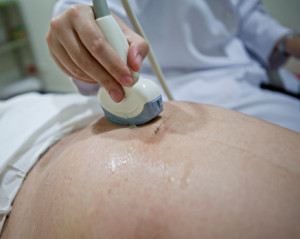Study Considers Brachial Plexus Injury Risk Factors
 A recently published study that analyzed the relationship between brachial plexus injuries in children whose mothers had previously given birth cautioned that health providers should not assume previous childbirth experiences protect against injuries during subsequent deliveries.
A recently published study that analyzed the relationship between brachial plexus injuries in children whose mothers had previously given birth cautioned that health providers should not assume previous childbirth experiences protect against injuries during subsequent deliveries.
Researchers sought to gain a better understanding of risk factors for brachial plexus injuries and designed the study as a retrospective analysis of all such injuries that occurred between October 2003 and March 2013 at a single hospital.
In addition to noting whether the injuries took place during a first or subsequent birth, researchers also analyzed the data with respect to the type of delivery (vaginal or c-section). The study was published under the title “Relationship between parity ad brachial plexus injuries” in the January 2016 issue of the Journal of Perinatology.
Results and implications of brachial plexus study
Brachial plexus injuries may occur during childbirth when excessive pressure or forceful pulling on the infant’s head and neck damages or tears the nerves that extend down the shoulder and arm to the fingers. Such injuries, which vary in severity, can result in limited motion and or paralysis of the arm, shoulder and hand.
Researchers arrived at the following conclusions based on their study:
- 71 injuries (91%) took place after a vaginal delivery vs. 7 (9%) as part of a cesarean delivery.
- Of the injuries that took place in connection to vaginal deliveries, 58% took place in women who had previously delivered, while 42% had an injured first child.
- Mothers who had delivered previously (multiparous patients) had shorter delivery times and fewer interventions.
- Health care providers frequently underestimated the size of the babies born to multiparous patients.
- Infants in the multiparous group were typically significantly larger than their older siblings.
Researchers found that multiparous patients are more likely to have larger infants during second or subsequent deliveries, but that doctors consistently underestimate the weight of these infants.
Researchers conclude that “The findings of this study should deter providers from assuming that a prior vaginal delivery is protective against brachial plexus injuries.”
Brachial plexus injuries and malpractice
High birth weight is among the risk factors for brachial plexus injuries, along with maternal diabetes, shoulder dystocia, prolonged second stage of labor, and advanced maternal age.
In some cases, it is not clear that a doctor or other health care provider could have avoided a brachial plexus injury. However, in other cases, doctors may carry some responsibility if they pulled on the baby in a way that caused the injury rather than following protocols for managing shoulder dystocia or failing to perform an emergency C-section despite obvious signs of fetal distress. The findings of the study above may suggest that doctors bear some blame for underestimating birth weight in multiparous deliveries and therefore not performing necessary C-sections.
Patients who believe that doctors may have been negligent in handling a delivery in a way that led directly to a birth injury may have a viable claim to compensation. Plaintiffs in such cases may also sue the hospital as well as the doctors and medical staff if they believe that the institution in question encouraged problematic practices, provided inadequate training or hired incompetent staff.

 Resources
Resources
 Resources
Resources

